A dive into medieval French history complete with royal conspiracies, a castle siege or two and, of course, those wolves. The film deals with the power struggle between Louis XI and the Duke of Burgundy but it’s really an excuse to get smashy with melee weapons.
Home Media Availability: Released on DVD.
Spider-King, Spider-King
Content Warning: The title is literal and both man and wolf die onscreen.
Film actors in the first half of the twentieth century had a favorite French monarch and it’s probably not who you would expect. The Sun King? Whatever. Louis XV? Only if we could focus on Madame du Barry. Louis XVI? Loses his head in a crisis. No, for that magic combination of cinematic quality and quantity, the monarch that gave the best bang to the franc was Louis XI.
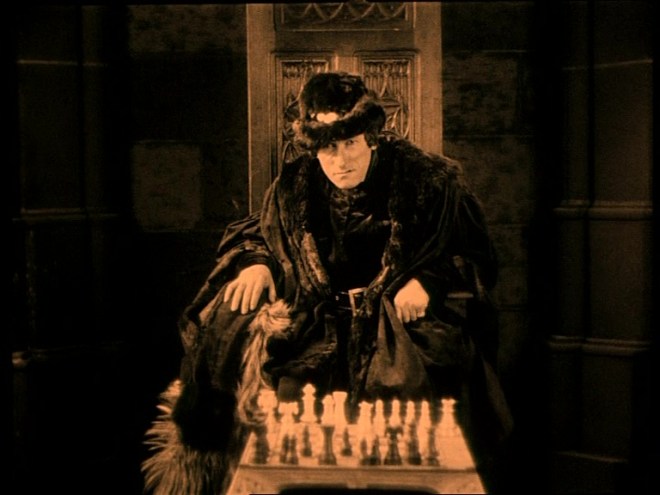
It’s obvious why. A colorful personality and a schemer so crafty that he earned the nickname of “the Universal Spider,” Louis XI was an actor’s dream. Who doesn’t want to lurk around royal apartments plotting against one’s enemies and possibly also picking one’s nose? Plus, a feud with the Duke of Burgundy just sounds cinematic, doesn’t it?
Conrad Veidt had the role for his American debut in The Beloved Rogue, Fritz Leiber, Sr. played the part in the 1920 version of If I Were King and Basil Rathbone took over the crown (or weird little hat) in the talkie edition. There were several short films about the monarch and O.P. Heggie played him in the 1930 version of The Vagabond King (the title refers to poet François Villon, Louis’ usual cinematic foil).

In The Miracle of the Wolves, there is no Villon but French stage great Charles Dullin steps into the role and opera star Vanni Marcoux plays his Burgundian rival, Charles the Good. These experienced performers add heft to the story but the real stars of the show are director Raymond Bernard, his cinematography team and his trusty hand-held camera.
First, let’s get ourselves situated historically. Louis XI was the son of Charles VII, famously helped to the throne by a certain Joan of Arc. France as we know it today was a divided kingdom and inheriting the throne by no means assured rule of the country. The English still had a foothold in the country (including, at one point, Paris) and powerful nobles like Charles, the Duke of Burgundy were ready to challenge the authority of their king and possibly seize power for themselves.
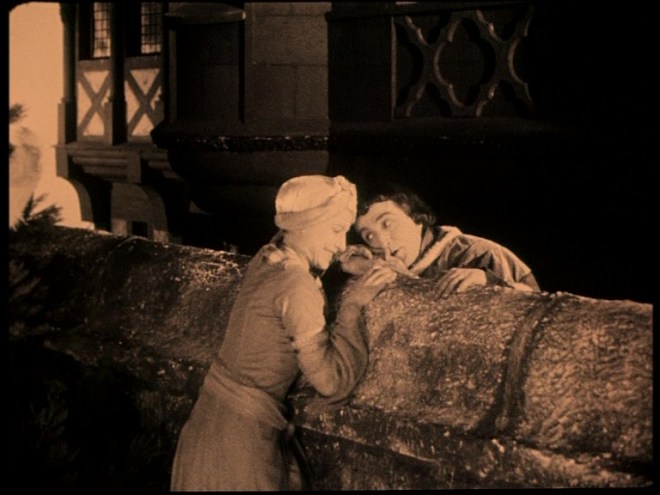
In short, we have chaos and a potential for some very exciting political intrigue. And, since fiction conventions of the time demanded it, we also have a romance between historical characters. In this case, the noblewoman and ward of the king, Jeanne Fouquet (Yvonne Sergyl) and the gallant knight and true blue Burgundian Robert Cottereau (Romuald Joubé).
(Historically, Fouquet was not a royal ward but the daughter of an officer and Cottereau was the son of the duke’s physician and there’s no evidence that the pair met; Fouquet definitely married someone else. But let’s not let little issues like this interfere with our good time.)
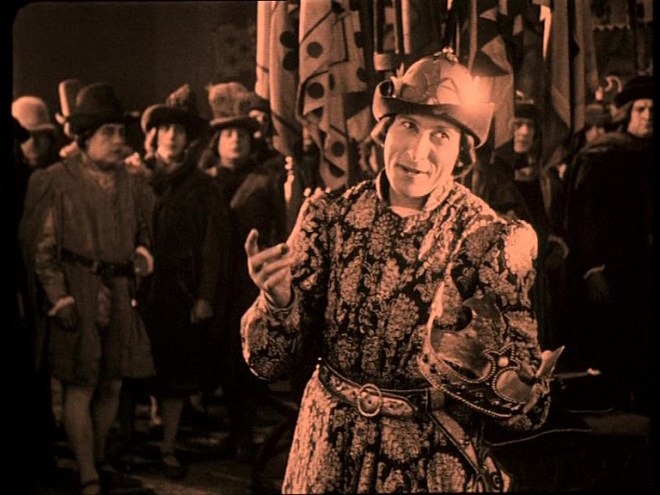
Those crazy kids are just dying to be married but they need royal permission to do so. Louis views Jeanne as his own daughter and is inclined to allow this love match but there is a risk that mixing their bloodlines would be some kind of secret sauce that would give Charles a political advantage.
Basically a third of the film is made up of Louis and Charles cordially hissing at one another from opposite ends of the room and I am fine with that. Dullin brings an oily subtlety to the part and much though I enjoyed Conrad Veidt’s snot-encrusted rendition, there is something to be said for finer details. Vanni Marcoux is louder and more blustering but my understanding is that this would be quite accurate for Charles the Good and the operatic tone of the performance is understandable.
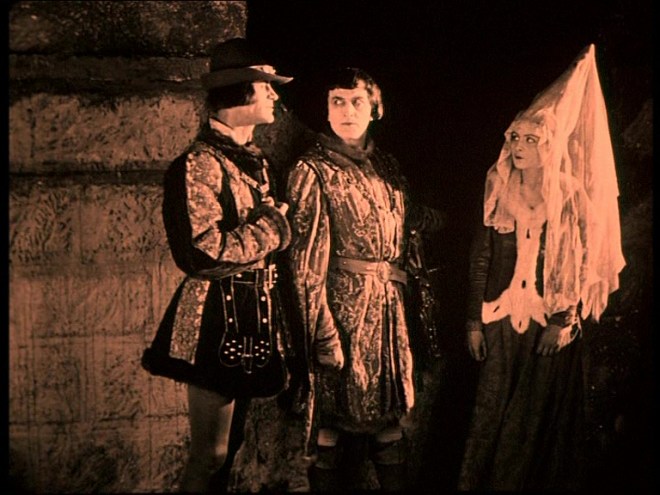
Robert and Jeanne are… okay for the first two-thirds of the film. Not bad but not particularly interesting as historical love interests go. She’s dainty and playful, he’s noble and deeply in love, they seem like they’d have a nice life and some cute kids if that nasty lord of Châteauneuf (Gaston Modot) didn’t keep trying to creep all over Jeanne.
And then we get to the Miracle of the Wolves.

The king is in peril and his only hope is a letter that Jeanne must deliver but Châteauneuf is pursuing her through the snow with a band of armed men. (The suspense of her flight is aided by tracking shots and a handheld POV camera, which works, and undercranking, which does not.) He’s already murdered her father and means to seize both the letter and the young lady. Just when things couldn’t get any worse Jeanne comes upon a pack of wolves. It looks like the end but the wolves ignore her completely and attack Châteauneuf and his men instead.
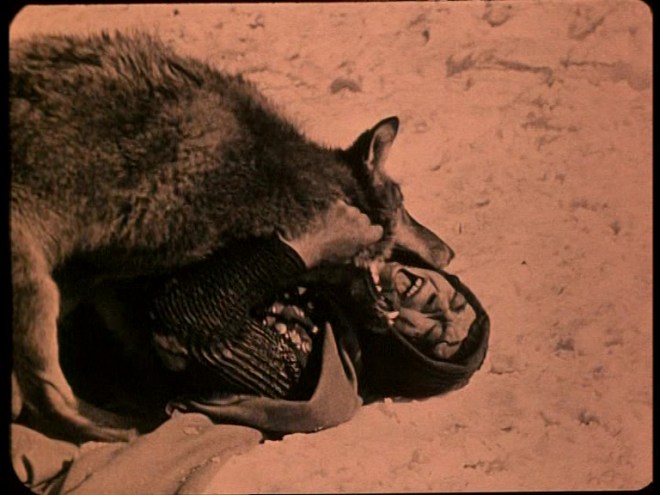
This scene is not for the faint of heart as there is a considerable amount of blood and both men and wolves end up dead as a result. Jeanne flees and manages to deliver her letter and save Louis from certain death.
Now, what is particularly interesting is how this scene changes Jeanne’s character. Students of French history may have recognized her as the future Jeanne Hachette who wielded, well, a hatchet and rallied troops to victory over the Duke of Burgundy’s forces. But getting Jeanne from dainty damsel to hatchet-wielding fury seemed like quite a stretch.

The miracle part of The Miracle of the Wolves provides believable reason for Jeanne to turn militant. The conflict has gone from theoretical to personal. She doesn’t suddenly turn into Xena or anything but swinging a hatchet, shooting a bow and throwing heavy objects on castle invaders no longer seems like much of a stretch.
The finale of the film takes place during a full-size siege on a full-size castle complete with melee, mayhem and heavy artillery. We have smoke, we have cannons, we have blood and guts and people getting stabby. In fact all the large-scale medieval combat scenes in this picture are among the best every made and I think it compares favorably to the very latest entertainment. (And they’re well-lit; you can actually see what’s happening. Imagine.)

Like Raymond Bernard’s later film, The Chess Player, The Miracle of the Wolves is notable for its imaginative use of a handheld camera during its action scenes. I’m not making an claims of “the first” or anything like that but Bernard and his team use the camera in a very modern manner, using it to create a “you’re right there” feel that is both dynamic and immersive, it’s by no means a willy-nilly affair. And he doesn’t overplay his hand, interspersing the handheld material with static shots to create rhythm, contrast and excitement. This is how you put on a battle or a chase scene.
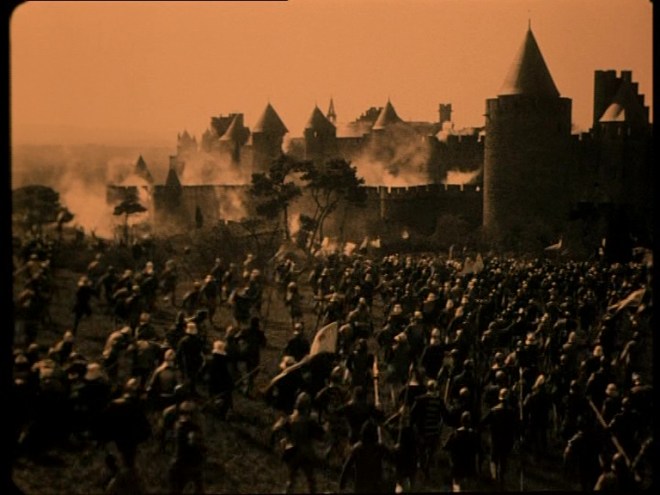
Of course, the film also has the advantage of European locations and real castles. This gives the production even more heft, especially when combined with the stylized-but-authentic-enough costuming.
Charles Dullin and Vanni Marcoux similarly ground the picture. Their impressive stage experience gave them the skills they needed to pull off such heavy roles and both show an instinctive understanding of how to play to the camera as opposed to a live audience.
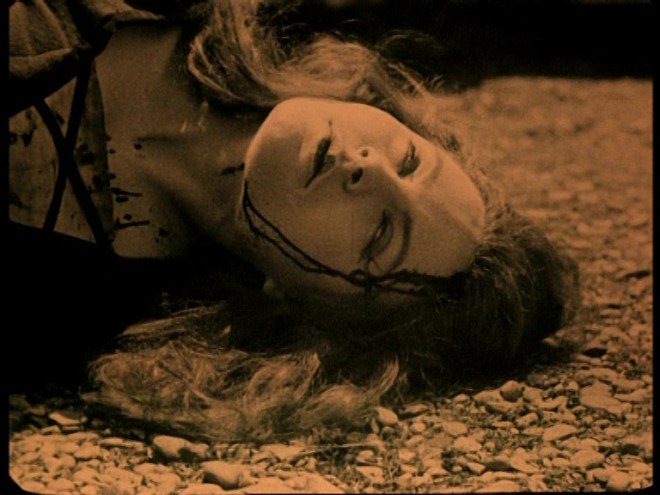
In the end, The Miracle of the Wolves is a skillful blend of old and new. We have stage veterans and cutting-edge cinematography, old castles and modern storytelling sensibilities. It’s most extraordinary.
I should mention, though, that the filmmakers make a few assumptions about the viewer’s knowledge of medieval French history and quite a lot of information gets thrown on the screen at once. I would recommend at least skimming an article about Louis XI before watching if this period is not something you have studied before. You will probably get a lot more out of the picture if you do.

(I don’t consider this assumption of French history knowledge to be a flaw in the production since the film was made in France by French filmmakers for French audiences and produced by the French Société des Films Historiques company. In other news, it seems that a company called The Coffee Bean and Tea Leaf sells both coffee and tea.)

The Miracle of the Wolves is tragically neglected and that’s a real shame because it showcases all the dynamic action and good taste that we have come to expect of a well-made silent historical epic. The picture is vibrant and intelligent, particularly in the final act, and it deserves more attention.
Where can I see it?
The Miracle of the Wolves was released on DVD with English subtitles in Gaumont’s Raymond Bernard box set but I would be interested in seeing it in HD and, eventually, on the big screen.
☙❦❧
Like what you’re reading? Please consider sponsoring me on Patreon. All patrons will get early previews of upcoming features, exclusive polls and other goodies.
Disclosure: Some links included in this post may be affiliate links to products sold by Amazon and as an Amazon Associate I earn from qualifying purchases.

Hi
Thanks for your review of this movie. I got it somewhere but never seen it. So I will do it soon.
If you don’t Know it, I suggests you to see Raymond Bernard’s masterwork : Les miserables. Ok it is not a silent one but this 5 hours picture (in 3 parts) is the best version of Hugo novel without any discussion and is simply one of the best french movie of the 30th. The cast includes all the greaters french actors&actresses of these times, with unique Harry Baur in Jean Valjean. Incredible acting, direction, photography and settings Really a masterwork. A great 4k bluray exists with english subtitles, by Pathe, that can be found for less that 15 euros, if you have zone B bluray reader. I don’t know if a us edition exists.
Thanks again for your chronicles.